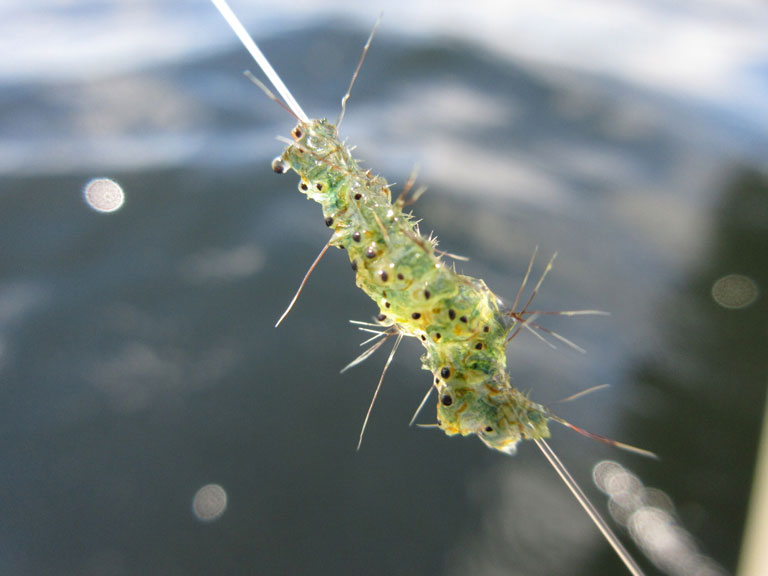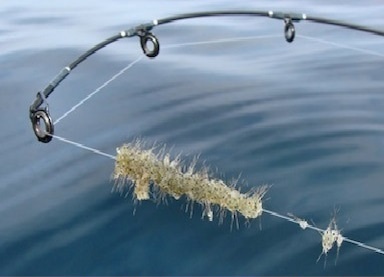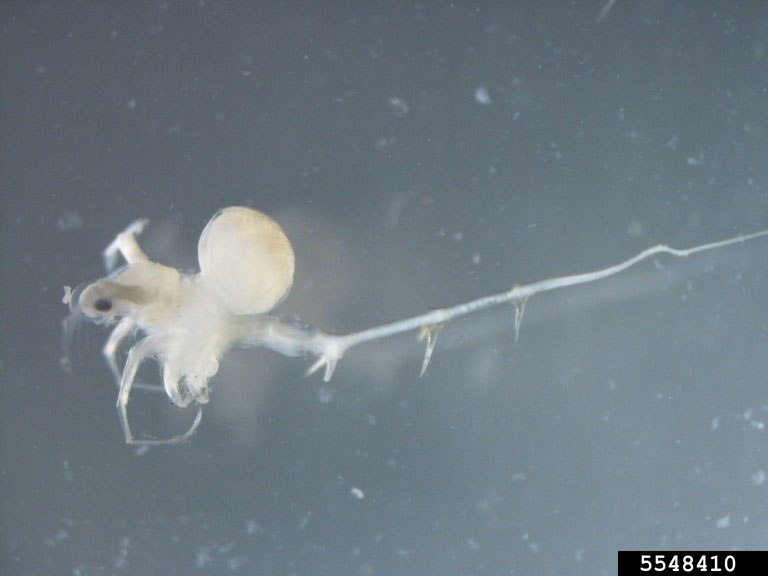As seen in the images spiny waterfleas are often found on fishing line or other equipment in clumps that resemble a gelatinous blob. Spiny waterfleas are microscopic animals that live in open water. Adults range from one-quarter to five-eighths inch long and are opaque in color. They have a single long tail with one to four spines and have one large, distinctive black eyespot.
The spiny waterflea is a predatory zooplankton that eats other zooplankton. The spiny waterflea is native to Europe and Asia. The species was unintentionally introduced into the United States’ Great Lakes through the discharge of contaminated cargo ship ballast water. They were first discovered in Lake Ontario in 1982, they spread to Lake Superior by 1987, and they have been spreading through Minnesota. They are not yet in Clearwater Lake but they have spread to many northern Minnesota lakes and they are as close as Mille Lacs.









